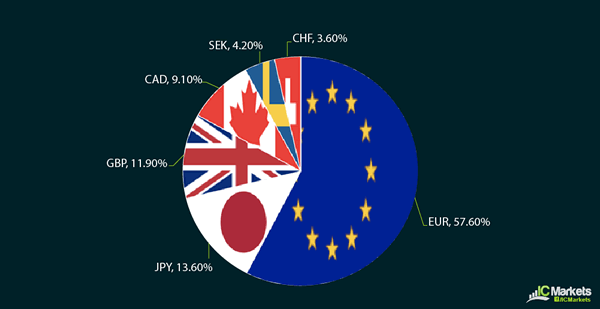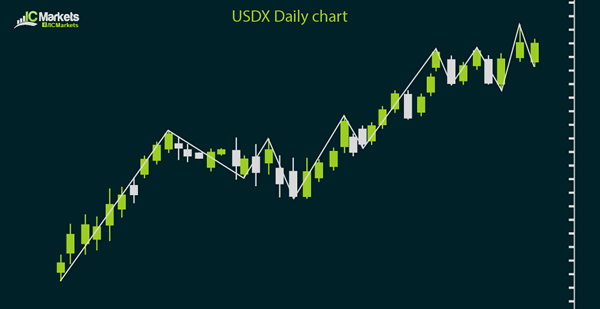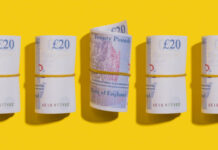Another useful tool in fundamental analysis is using the U.S. dollar index or USDX for short. This keeps track of the dollar’s performance against a basket of currencies.
Included in this basket of currencies are the euro, yen, pound, Canadian dollar, Swedish krona, and Swiss franc. Aside from providing a general direction of dollar behavior, this also tracks the U.S. economy’s performance against a total of 22 economies, as the euro is a shared currency among 17 nations.
With that, the USDX could serve as a barometer for most U.S. dollar pairs and future dollar price action. Technical levels are generally respected by this index, with tests of support and resistance likely to hint of potential market turns.
The USDX is measured in points, usually until the third decimal place using a base of 100.000. This means that an 88.500 value reflects a 11.5% drop in the U.S. dollar’s value against the basket of currencies. A 105.675 reading shows a 5.675% increase in the dollar’s value relative to the other six currencies.
Analysts have begun looking at this index around the 1970s as leaders of the world’s biggest nations back then met in Washington to agree on a standard against which their currencies can float freely against. This means that the value of their currencies is relative to the U.S. dollar.

Other versions of the dollar index were constructed since then. Among these is the trade-weighted dollar index, which takes into consideration the trade values of goods from other economies. This was constructed by the Fed to monitor the competitiveness of U.S. products in the international scene. The weights are adjusted periodically but this index isn’t usually monitored by forex traders, as the basic USDX has been the norm for tracking the Greenback’s performance.
When it comes to predicting forex price moves, technical and fundamental analysis can also be applied on the dollar index to forecast future price action. Trends are monitored and leading or lagging indicators can be applied. Inflection points such as round numbers or retracement levels can also be indicative of potential market corrections or reversals. Chart patterns and Japanese candlestick formations are also useful in predicting USDX movement.
From there, the behavior of EUR/USD, USD/CHF, GBP/USD and other dollar pairs can be predicted. When the USDX is projected to bounce, it is reasonable to assume that EUR/USD could selloff or that USD/CHF could also rally. When the USDX is expected to drop, one can predict that GBP/USD would climb or that USD/JPY would weaken.

What’s important to keep in mind when using the USDX in predicting currency price moves is whether or not the U.S. dollar is a counter currency or base currency. For instance, the USDX is inversely correlated to EUR/USD’s moves because the U.S. dollar is the counter currency in this scenario.

Watching long-term trends in the dollar index is also useful in observing the Dollar Smile Theory. This is a phenomenon that helps swing traders predict whether the U.S. dollar can react to fundamentals or risk sentiment.
It has been observed that the dollar tends to act more of a safe-haven when global economic performance is very weak or in times of recession. During these cases, weak data tends to support the U.S. dollar’s rallies while strong data leads to a dollar selloff.
However, when the global economy is more or less stable, the U.S. dollar can be more sensitive to U.S. economic data. This means that weak U.S. reports lead to a dollar selloff while strong reports lead to a rally.












